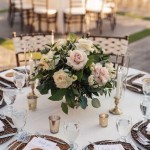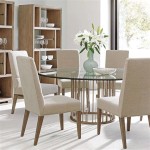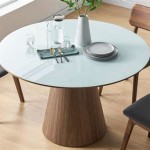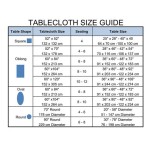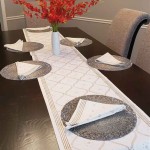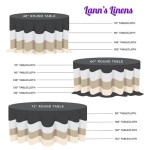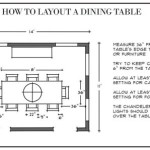Round vs. Rectangle Dining Table: Which One is Right for Your Home?
The selection of a dining table is a crucial decision in defining the aesthetic and functionality of a dining space. Among the numerous shapes available, round and rectangle dining tables are the most prevalent choices. Each shape possesses unique characteristics that cater to diverse spatial requirements, design preferences, and social dynamics. Understanding the nuances of each shape is essential to making an informed decision that complements both the home's architecture and the lifestyle of its inhabitants.
The primary considerations in choosing between a round and rectangle dining table involve assessing the available space, accommodating the typical number of diners, and aligning with the overall design style of the home. Factors such as traffic flow, visual balance, and the intended ambiance of the dining area should also be carefully evaluated. Failing to consider these factors can result in a dining space that feels either cramped and unwelcoming or cavernous and impersonal.
Space Optimization
One of the most significant factors in determining the appropriate table shape is the amount of available space. Rectangle dining tables, due to their elongated form, are generally better suited for larger, more rectangular rooms. Their linear design effectively utilizes the existing rectangular shape of the room, creating a sense of harmony and visual continuity. A rectangle table can be strategically placed to define the dining area within an open-concept living space, delineating it from other zones.
Conversely, round dining tables are often a more practical choice for smaller or square-shaped rooms. Their circular form promotes a sense of openness and allows for easier movement around the table. A round table eliminates sharp corners, which can be particularly advantageous in tight spaces, reducing the risk of bumping into edges. The compact footprint of a round table also allows for more flexible placement, making it suitable for awkwardly shaped or multi-functional spaces.
When measuring the available space, it is crucial to account for adequate clearance around the table. A minimum of 36 inches of space should be allowed between the edge of the table and any walls or furniture to ensure comfortable seating and ease of movement. Without sufficient clearance, the dining area can feel congested and impede the flow of traffic through the room, regardless of the table's shape.
Seating Capacity and Social Interaction
The number of people typically seated at the dining table is another critical consideration. Rectangle dining tables generally offer greater seating capacity than round tables of comparable surface area. The elongated shape of a rectangle table allows for more chairs to be placed along its sides, accommodating larger gatherings and formal dinner parties. This makes rectangle tables a suitable choice for families and individuals who frequently entertain guests.
While rectangle tables excel in accommodating large groups, round tables foster a more intimate and inclusive dining experience. The circular shape eliminates the hierarchical seating arrangement often associated with rectangle tables, where individuals at the head of the table may inadvertently hold more conversational power. Instead, a round table allows everyone to see and interact with each other equally, promoting a sense of connection and shared experience. This makes round tables ideal for smaller gatherings and intimate dinners.
It's important to note that seating capacity for round tables can be increased by opting for a table with leaves that can be added to expand its diameter. This allows for flexibility in accommodating both small and larger groups. Similarly, some rectangle tables also feature extendable leaves, providing additional seating when needed. However, when extended, the rectangle table's length may become disproportionate to the room, impacting its overall aesthetic balance.
Aesthetic Considerations and Design Style
The choice between a round and rectangle dining table should also align with the overall design style of the home. Rectangle tables are often associated with more formal and traditional aesthetics. Their linear form and symmetrical arrangement lend themselves well to classic dining room settings, particularly when paired with elegant chairs and a statement chandelier. A rectangle table can also complement modern and minimalist designs, provided its lines are clean and its materials are understated.
Round tables, on the other hand, tend to evoke a more casual and contemporary feel. Their softer curves and less formal appearance can create a relaxed and inviting atmosphere, particularly when paired with comfortable seating and natural materials. Round tables can also be successfully integrated into bohemian, eclectic, and farmhouse-inspired interior designs, adding a touch of warmth and personality to the space.
The material of the dining table also plays a significant role in its aesthetic impact. Wood, whether light or dark, is a versatile choice that complements both round and rectangle tables, adding a sense of warmth and natural beauty. Glass tabletops offer a sleek and modern look, creating a sense of spaciousness and allowing the surrounding décor to shine. Metal accents, such as chrome or brass, can add a touch of sophistication and glamour, while stone tabletops, such as marble or granite, provide a durable and luxurious finish.
The base of the dining table is equally important in contributing to its overall aesthetic. Pedestal bases, which are common for round tables, offer a clean and unobstructed look, maximizing legroom and creating a sense of airiness. Four-legged bases, which are more common for rectangle tables, provide stability and a more traditional appearance. Trestle bases, with their distinctive crossbars, add a rustic and architectural touch, while sculptural or geometric bases can create a contemporary and artistic statement.
Furthermore, the surrounding décor should complement the shape and style of the dining table. A rectangle table may benefit from a rectangular rug underneath to anchor the space and create a sense of symmetry. A round table, conversely, may be paired with a round rug to enhance its circular form and create a more cohesive look. The choice of lighting, artwork, and accessories should also be carefully considered to create a harmonious and balanced dining environment.
In summary, the selection of a round or rectangle dining table is a multifaceted decision that requires careful consideration of space constraints, seating requirements, and aesthetic preferences. By thoroughly evaluating these factors, homeowners can choose a table that not only meets their practical needs but also enhances the overall beauty and functionality of their dining space.
Regardless of the shape selected, ensuring the chosen table complements the existing architectural features, furniture, and overall design theme will contribute to a more cohesive and visually appealing home environment. Thoughtful planning and careful execution will result in a dining area that is both functional and aesthetically pleasing, a space where memories are made and shared.

Round Or Rectangular How To Pick The Right Shape Of Dining Table For Your Home

Round Or Rectangular How To Pick The Right Shape Of Dining Table For Your Home

Expert Advice How To Design A Perfectly Scaled Dining Room The Kuotes Blog

Dining Tables A Comprehensive Guide

Round Or Rectangular Dining Table Amy Youngblood Interiors

Table Size Seating Capacity Round Rectangular More

The 7 Best Dining Tables And How To For One Reviews By Wirecutter

The 7 Best Dining Tables And How To For One Reviews By Wirecutter

Rules Of Thumb For Rugs Under Round Dining Tables Inspiration

What Size Rug Under Dining Table Here S The Best Way To Find Righ
Related Posts

